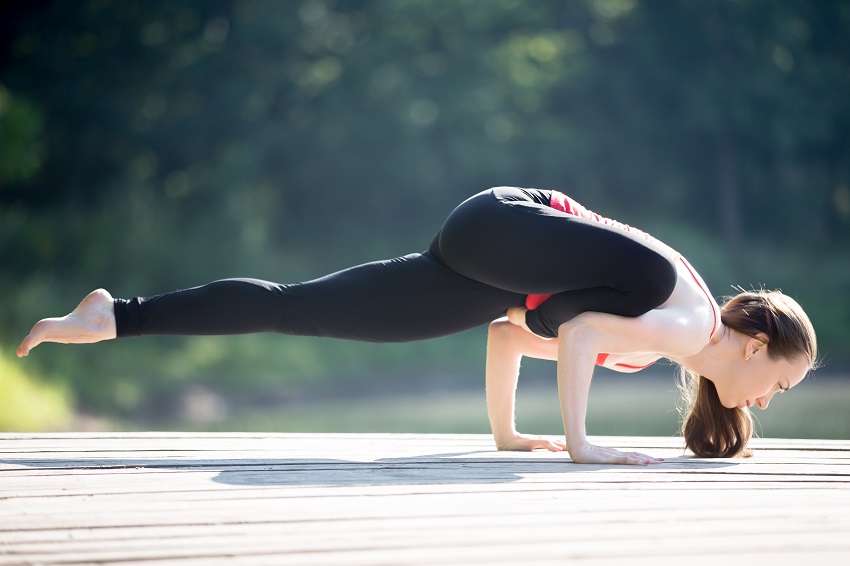Flying Pigeon Pose:
Name: Flying Pigeon Pose
Sanskrit: Eka Pada Galavasana
Pronunciation: eh-KAH pad-DAH-GaL-VAA-sun-Aa
Alternative Names: One-Legged Balance, Pyramid pose, Intense side stretch pose, side flank intense stretch, single-leg forward bend.
Pose Level: Lying pigeon is an advanced-level yoga pose.

Anatomy Involved:
Eka Pada Galavasana is an effective yoga pose used to increase the strength of the arms and core muscles. It is also helpful in opening hips and developing balance. Advanced-level yoga practice, flexibility, stamina, balance, and mental and physical strength are required to perform the pose effectively without the fear of falling forward. It helps in building self-confidence by boosting your inner potential.
Related Article: Common Ways to Improve & Increase Self-Confidence or Self-Esteem
Benefits:
- Improving strength in the abdominal muscles and strengthening the arms.
- Boosting mental focus and concentration
- It opens up the hips and inner thighs and also stretches the glutes.
- Keeps cardiopulmonary system healthier
- Improves body balance
- It helps to keep a relaxed mind
- Effective for pelvic floor muscles
Step-by-Step Instructions:
- Start in Tadasana pose by placing hands beside the hips and feet apart;
- Then, place the right ankle above the left knee, pointing toward the right;
- Keep your right foot slightly bent;
- Lower down your pelvis by bending your knees;
- After balancing on one hand, lift your right foot with the other hand and place it down on your left thigh;
- Now lean slightly forward placing your hands on the mat, spreading the fingers and distancing shoulders, gripping the mat firmly;
- Place your right leg touching the back of your right arm;
- Put the body’s weight on your right leg and gently raise your left foot;
- After gaining balance, spread your legs and bend into the pose;
- Hold the position of your fingers, remaining with an active lifted gaze;
- For coming out of the pose, slowly place your left foot on the floor. Release the right foot from the right arm, lift the pelvis and hands back to the Tadasana pose and relax.
Related Post: What is the Meaning of Pranayama: Pranayama Breathing Techniques
Pose Modifications:
For example, could the yogi use a supportive pillow or blanket? Is there another variation of the maneuver?
For beginners to perform this pose with success, some variations are made.
- Use a yoga block to lift your back foot.
- Perform the pose with the knee bent
Contraindications:
Avoid performing Eka Pada Galavasana if you are have any of the following conditions.
- Low blood pressure or hypotension
- Pain, injury, or any recent surgery in the spine, neck, feet, hips, wrists, hands, fingers, legs, knees, pelvis, or ankles.
- Sciatica
- Insomnia
- A full stomach
Poses Commonly Transitioned too:
Flying Pigeon pose can be used to prepare for Chaturanga Dandasana and Urdhva Mukha Svanasana.
Poses Commonly Transitioned From:
Supta Kapotasana, Eka Pada Raja Kapotasana Modified, Uthan Pristhasana, Chaturanga Dandasana, Sucirandhrasana, Shalabhasana, Gomukhasana, adho mukha vrksasana, Navasana and Tri Pada Adho Mukha Svanasana is the different preparatory pose that helps to perform Eka Pada Galavasana.




